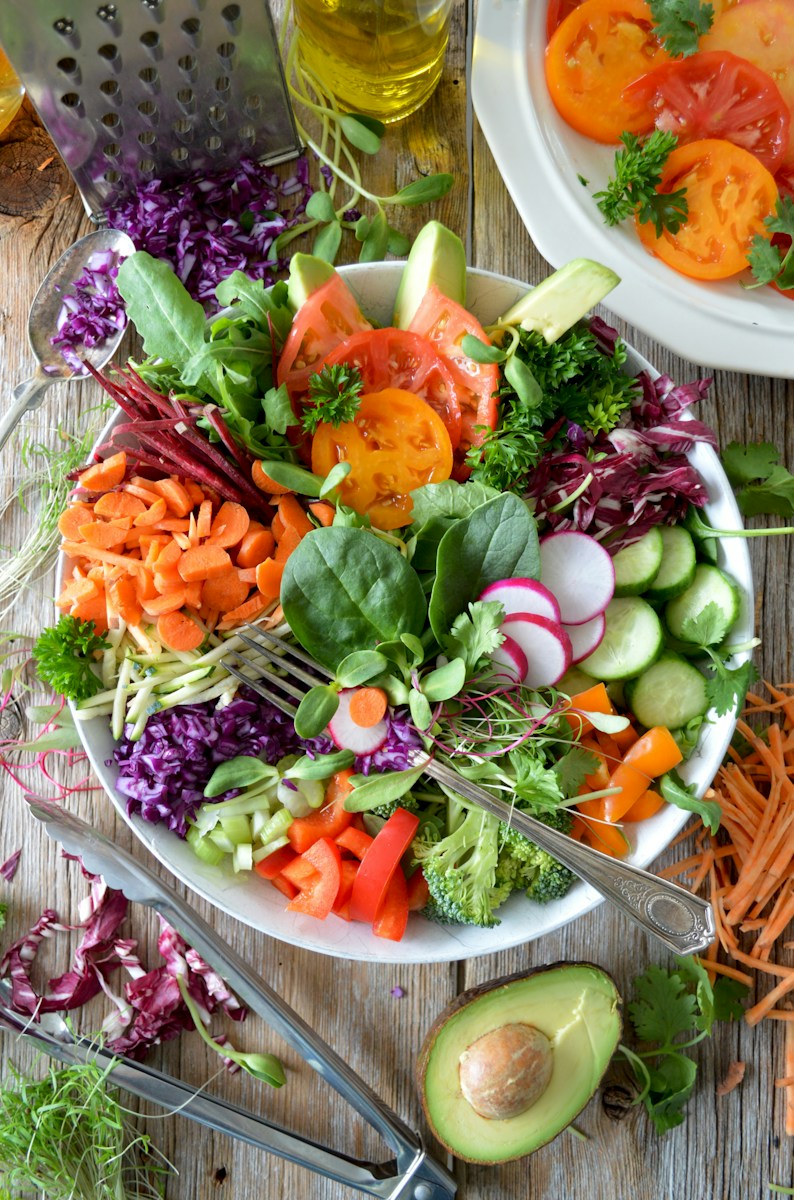How to create healthy and flavorful salad dressings?

When it comes to eating healthy, salads are often the go-to choice. However, the dressing can often make or break the salad. While store-bought dressings might come with a variety of preservatives and added sugars, homemade dressings offer an opportunity to control what goes into your food, making them a healthier choice. This article aims to guide you through the process of creating your own healthy, flavorful, and easy-to-make dressings.
Understanding the Basic Components of a Salad Dressing
Before diving into specific recipes, it’s crucial to understand what makes up a salad dressing. Generally, a salad dressing consists of three main components:
Cela peut vous intéresser : The ultimate guide to savory baking: pies, quiches, and more
-
Oil: This ingredient forms the base of most dressings. Olive oil is a common choice due to its health benefits and robust flavor.
-
Vinegar or Acid: This component provides the tangy flavor that contrasts and complements the oil. Vinegar, lemon juice, and lime juice are popular choices.
Avez-vous vu cela : How to cook classic italian lasagna?
-
Emulsifiers: These agents help to combine the oil and vinegar, which naturally tend to separate. Mustard and honey are common emulsifiers.
By understanding these components, you can experiment with different variations to create unique flavors.
The Classic Vinaigrette: A Simple Start
One of the most basic salad dressings you can make is the classic vinaigrette. It’s a simple combination of oil, vinegar, and an emulsifier. Here’s a basic recipe to get you started:
- 1 cup extra virgin olive oil
- 1/3 cup red wine vinegar
- 1 teaspoon dijon mustard
- Salt and pepper to taste
To make the vinaigrette, simply whisk the vinegar, mustard, salt, and pepper together. Gradually add the oil, continually whisking until the dressing is emulsified. This makes a tangy, versatile dressing that complements a variety of salads.
Adding a Sweet Twist: Honey Mustard Dressing
If you prefer something a bit sweeter, consider making a honey mustard dressing. This creamy dressing is perfect for those who enjoy a sweet and tangy flavor profile. Here’s a simple recipe:
- 1/2 cup honey
- 1/2 cup dijon mustard
- 1/2 cup olive oil
- 1/4 cup apple cider vinegar
- Salt and black pepper to taste
In a bowl, whisk together the honey and mustard. Next, slowly drizzle in the oil while continuing to whisk. Lastly, stir in the vinegar, salt, and pepper until well combined.
A Taste of the Mediterranean: Greek Yogurt Dressing
For a creamy, tangy dressing with a hint of garlicky goodness, you can’t go wrong with Greek yogurt dressing. This dressing is not just delicious, but it’s also packed with protein. Here’s a simple recipe:
- 1 cup plain Greek yogurt
- 2 tbsp olive oil
- 2 cloves garlic, minced
- Juice of 1 lemon
- Salt and black pepper to taste
Combine the Greek yogurt, olive oil, garlic, and lemon juice in a bowl. Season with salt and pepper and whisk until well combined.
Going Asian: Ginger-Sesame Dressing
If you’re a fan of Asian flavors, a ginger-sesame dressing could be the perfect choice. This dressing is rich, flavorful, and adds an oriental touch to your salads. Here’s a simple recipe:
- 1/4 cup olive oil
- 2 tbsp sesame oil
- 2 tbsp rice vinegar
- 1 tbsp soy sauce
- 1 tbsp honey
- 1 tbsp grated fresh ginger
- 1 clove garlic, minced
Combine all ingredients in a bowl and whisk until well combined. The richness of the sesame oil, combined with the zing of ginger and garlic, makes this an unforgettable dressing.
Remember, making your own salad dressings isn’t just about being healthy, it’s also about exploring different flavor profiles and having fun in the kitchen. Whether you’re a fan of classic vinaigrettes or you prefer something creamier like a Greek yogurt dressing, there’s a homemade dressing out there to suit your taste buds.
Boosting Your Health: Healthy Additions to Dressings
Many people are turning to homemade salad dressings to make their salads healthier. Using dressing recipes that are loaded with healthy ingredients can provide added nutritional benefits. For instance, adding herbs and spices to your homemade dressings can not only enhance the taste but also provide health benefits.
The most common herbs and spices used in salad dressings include basil, oregano, thyme, cayenne, black pepper, and turmeric. These ingredients not only add flavor but also contain antioxidants, which can help protect your body from free radicals.
Another healthy addition could be garlic. Adding garlic powder or minced garlic to a dressing can not only intensify its flavor but also provide health benefits such as boosting the immune system and improving heart health.
A popular ingredient in many dressing recipes is yogurt, specifically Greek yogurt. Greek yogurt is packed with probiotics and proteins, making it a healthy addition to your dressing. Incorporating yogurts in dressings can create a creamier texture and a tangy flavor.
Finally, don’t forget about the power of seeds. Chia seeds, flax seeds, or sesame seeds can add a crunch to your dressing along with a dose of heart-healthy omega-3 fatty acids and fiber. These are especially perfect for those who like a bit of texture in their dressing.
Dressing Healthy: Avoiding Common Salad Dressing Pitfalls
While making homemade dressings is a healthier option compared to store-bought versions, there are still some common pitfalls to avoid.
Firstly, avoid using too much oil. Even though olive oil is healthy, it is also high in calories. The key is to use it sparingly. As a general rule of thumb, a salad should not be swimming in dressing. A light drizzle should be enough to coat the salad without drowning it.
Secondly, watch out for added sugars. It’s tempting to add honey or another sweetener to counteract the acidity of vinegar or lemon juice. However, this can quickly turn your healthy homemade dressing into a sugar bomb. If you need a sweetener, opt for a natural one like honey or pure maple syrup and use it sparingly.
Lastly, be mindful of sodium. Ingredients like dijon mustard, soy sauce, and even some vinegars can be high in sodium. Too much sodium can lead to high blood pressure and other health issues. Stick to lower sodium versions of these ingredients or use them in moderation.
Conclusion: The Joy of Creating Your Own Dressings
Creating your own salad dressing can be a creative, fun, and healthy journey. You have the freedom to experiment with different flavors, from the classic vinaigrette with red wine vinegar and dijon mustard to the sweet and tangy honey mustard dressing or even the rich and vibrant Asian-inspired ginger-sesame dressing.
By making your own dressings, you’re not only becoming an active participant in your health but also opening up a world of flavors that can make your salad experience more diverse and exciting.
So, why not give it a try? Start with a basic dressing recipe, then slowly venture into adding other ingredients like herbs, Greek yogurt, or even seeds. You may surprise yourself with the incredible dressings you can create right in your kitchen.
In conclusion, creating your own healthy homemade salad dressings can offer not just better taste but also improved health benefits. So, throw away that store bought dressing and start making your own today, your body and your taste buds will thank you for it!
